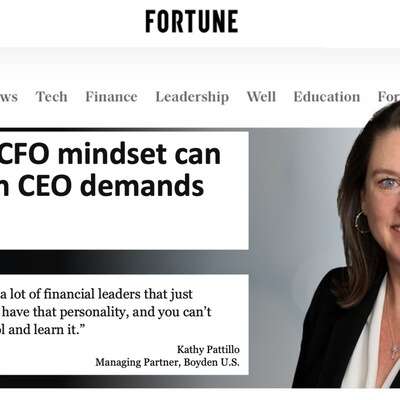Claire Lauder, managing partner at Boyden UK & Ireland, looks at the evolving role of the chief sustainability officer and how they can help improve business resiliency by changing internal company structures.
Originally published 12 January edie.net
With three in four sustainability officers in FTSE 250 industrial companies having been in the role for less than two years, there is a risk that organisations will be unable to achieve their implementation goals for the Global Stock Take of the Paris Agreement at COP28 in 2023.
Sustainability leaders in the industrial market have a suite of skills that stretches across finance, operations, marketing, and communications; they are multi-talented with gravitas and expertise in how to enable an organisation to deliver on sustainability targets.
However, our analysis of industrial companies in the FTSE250 and All-Share AIM Indices, finds significant variation across the industrial landscape for where sustainability sits in organisations, who drives it, and how it is governed – which could hold back the sector’s efforts to lower carbon emissions and protect the planet.

The current picture of sustainability in the industrial sector
The benefits for companies choosing a greener path are significant. Sustainability is a key driver for economic success. Analysis by MSCI and EY found that chemicals and materials firms in the EU who have high ESG ratings are securing valuation premiums of 229%. And under the European Commission’s Green New Deal, funding will be increased, and the Commission expects that €1trn will be mobilised through the EU budget and Invest EU to support sustainable investments.
Governments, consumers, and investors are paying closer attention to issues such as supply chains and working conditions than even a decade ago. And with industry totalling around 40% of global carbon emissions, as estimated by PwC, the case for having a clear sustainability strategy to get ahead and protect the planet for future generations is clear.
The good news is that last year the United Nations found a record number of big polluters are cutting carbon dioxide emissions, creating a tipping point across the whole supply chain.
Where sustainability sits in company structures
Going behind the curtain to look at company structures that are driving this change, its evident sustainability is now much more than a tick-box exercise for the industrial sector.
Boyden’s new report on Sustainability Appointments in Industry: Approaches to leadership and governance‘ combines data analysis with discussions with executives and board leaders, revealing that the majority are working to embed sustainability into their company strategy.
Findings show the majority of UK industry has a named individual in a primarily sustainability-focused role – with a peak in appointments coinciding with COP26 and the Environment Act 2021. In the FTSE 250, out of the 60 industrial companies we analysed, there are 55 with a named sustainability officer and five companies without. Those without have oversight through health and safety-associated positions.
Encouragingly, sustainability officers have evolved from science or climate experts driving awareness and understanding of our impact on the planet, to senior-level corporate operators who can hold their own in the C-suite, influencing strategy and operations. Many years ago, it was the CFO who was seen as the main direct report to the CEO, with the later inclusion of the CTO in larger businesses. We are now seeing a similar relationship developing between the CEO and the Chief Sustainability Officer (CSO) – with 80% now reporting directly to company boards.
It’s not all smooth sailing, however. Despite sustainability officers now sitting at the top table, the majority of companies we analysed have seen these roles primarily develop from a health & safety, quality, or corporate social responsibility dimension, with governance often laid at the feet of control, audit, and risk committees.
Out of the 55 companies we analysed with a named sustainability officer, the majority also look after other elements of the business. Just 36% are solely focused on sustainability while almost half (49%) are combined with other areas ranging from health & safety to communications to risk & audit. This is not necessarily a bad thing, but the risk is sustainability is pigeonholed or side-lined, thereby preventing more innovative strategies from being pursued across the business.
Looking at 2023 and beyond
There is a pipeline of upcoming regulatory changes that will be important for business leaders to familiarise themselves with in 2023 and that highlight the need for sustainability to be interlinked with board-level leadership.
The International Sustainability Standards Board, which was set up in November 2021, is set to deliver a comprehensive global baseline of standards that will provide investors with information about companies’ sustainability-related risks and opportunities.
With sustainability becoming ever more important at a political, economic, and cultural level, companies will have to harness opportunities to integrate sustainability in a way that demonstrates it is fundamental to an organisation’s purpose and ability to deliver profit.
As we enter 2023, I’d encourage CEOs and board members to consider greater use of interim managers, who are change experts and change evangelists, proven at driving business change through people. The interim talent pool includes executives who are strategic, can reshape behaviour cultures and inject functional expertise; I would counsel engaging interim managers initially to analyse the supply chain. For organisations with a sustainability officer, I would advise exploring how to maximise their skillset, so they can drive innovation across the business and champion a greener future – which resonates with future talent, customers and shareholders alike.



